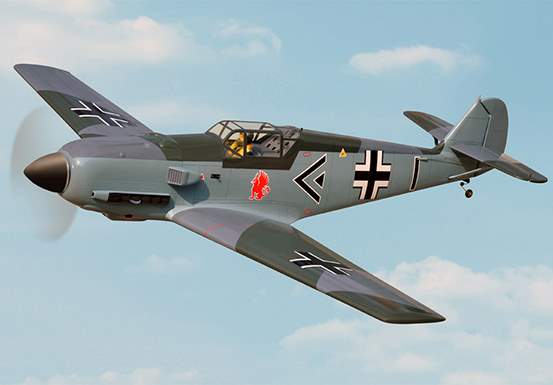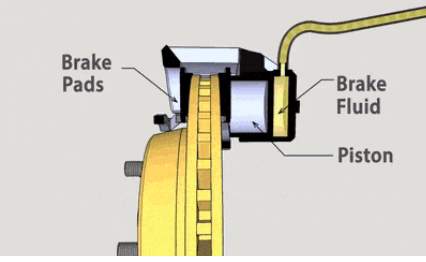Evaluation of Aircraft Braking Systems
| ✅ Paper Type: Free Essay | ✅ Subject: Engineering |
| ✅ Wordcount: 2975 words | ✅ Published: 18th May 2020 |
Synopsis/Introduction
Once brakes were introduced to all forms of transport allowing them to stop, it allowed all movement to speed up. It influenced the way people travelled, the time it takes and distance travelled, as well as how frequently. The encouragement of moving goods around the world increased because the time it took to transport them across the country had decreased dramatically.
There are multiple types of brakes which serve different purposes in various situations, some of the more popular including, disc, mechanical and servomechanism braking systems and in this report the brakes involved with Aircrafts will be evaluated. There are three main kinds of aircraft brakes, including aircraft disc brakes, thrust reversers and air brakes. Their development, the engineering principles and the impact they play on society will be covered in this report.
Aircraft brakes were chosen for this report due to a shared interest flight
Research
Development of Aircraft Brakes
Initially, aircrafts didn’t have brakes and therefore relied on slow speeds, rigid landing strips and the friction created between the ground and wheels to come to a stop. During World War I, the need for a more advanced aircraft became apparent. With the introduction of smoother landing surfaces and planes becoming significantly faster, brakes were now essential. Planes such as the ‘Hurricane’, ‘Spitfire’ and ‘The Zero’ were key examples of this, where the manufacturing countries including America, Germany and Japan had to develop these brakes as an essential part of winning the war.
Get Help With Your Essay
If you need assistance with writing your essay, our professional essay writing service is here to help!
Find out more about our Essay Writing Service
Another aspect to consider when discussing the development of aircraft brakes, is the load that planes held. It’s common knowledge that at first planes were small and used to transport small amounts of people or goods. This changed dramatically when people started travelling around the world via aircraft, hence the load being increased. This called for new, stronger brakes which could withstand the pressure of extra people and cargo.
To help this cause, in 1918 a man named Malcolm Laughead proposed a concept which involved using tubes and cylinders linked to hydraulic brakes which when put under pressure would transfer fluid through tubes to trigger the braking system. Using this idea originally designed for cars, the first aviation hydraulics were used in aircraft in the 1920’s and 1930’s.
Modern aircraft generally tend to use general disc brakes on the wheels of the plane when landing, however there are a variety of which are used on numerous aircraft.
A comparison of past and present plan designs can reveal the developments which have taken place over the last 50 years. For instance, the Messerschmitt Bf 109 german fighter plane (Left) is one which has minimal, if any, flaps, and ailerons known as ‘air brakes’ which are used to control movement and braking by creating drag in the air. In saying this, these fighter planes were still quite agile and able to maneuver quickly seeing as there primary role was to one; take down other fighters, and two avoid being hit. Comparatively in a modern context an aircraft’s goal has shifted from staying in a small area (war zone) and below 20 000 feet, to travelling high in the sky and transporting many passengers from country to country.
Messerschmitt Bf 109 Airbus A380 

It’s common knowledge that brakes aren’t the only aspect used to slow planes down. When referring to larger aircraft such as the modern Airbus A380, there are the general disc brakes, ailerons, flaps, rudder, elevators (air brakes) and reverse thrusters which all play a role in slowing the plane down. Obviously due to its size it requires many more components to help reach a complete stop and therefore the A380 has 8 spoilers on each wing which act as a blockage for airflow and causing drag.
Engineering Principles of Aircraft Brakes
Principles of Hydraulics and Pressure:
Pascal’s Principle:
“Pressure applied to any part of a confined fluid transmits to every other part with no loss. The pressure acts with equal force on all equal areas of the confining walls and perpendicular to the walls.”
This principle essentially states that fluids are incompressible when at rest, and this allows small forces to have a greater impact on larger forces meaning minor forces allow greater ones to be transferred.

https://gfycat.com/unripecourageousaruanas
Bernoulli’s Principle:
Bernoulli’s Principle states:
“ the pressure exerted by a moving fluid is inversely proportional to the speed of the fluid.”
This essentially demonstrates that the pressure and force applied to a travelling fluid will affect how quickly it travels from point A to B and hence, function within the hydraulic system.
This is a crucial element in aircraft as pressure control within braking systems essentially determines how well a plane or other aircraft lands.

https://energyeducation.ca/encyclopedia/Bernoulli%27s_equation
The reverse thrusters causes resistance to the pushing force of the plane, then to slow down the spinning wheels, disc brakes are utilised to cause that final stop.

Aircraft Control – an overview | ScienceDirect Topics
Impact of Aircraft Brakes
Essentially, the purpose of brakes are to cause the aircraft to slow down. Following this development, the surface of runways have been changed to a much smoother and shorter surface. These new surfaces assisted in providing a softer landing and a more comfortable ride as well as smoother take-off which was crucial specifically as planes moved into passenger transport when travel across the world increased. Therefore brakes have ultimately allowed travelling on an aircraft to become safer and more comfortable as a result of their ability to stop and control ground speed.
Not only is it beneficial to provide passengers with a comfortable ride, but braking systems ultimately allow an increase of travel due to the number of flights taking place. The increase in departures is possible because of braking systems as the time and space it takes to stop has decreased, therefore airlines can take advantage of the clear space once a quick sharp landing has taken place. Nowadays, aeroplanes rarely have to wait more than five minutes for a plane to land and return to the resting area, where then another three planes can take off and land.
https://www.fastcompany.com/3028634/heres-what-one-day-of-1500-planes-taking-off-from-lax-looks-like
Analysis
Advantages of the aircraft carbon braking system:
Shorter Cooling Time:
This refers to the cooling time of the brakes once they’ve been put to use. Carbon brakes are made to cool down quicker than steel brakes and this allows the aircraft to spend less time on the ground. Meaning they can turn around quicker and spend less time between each flight/mission they’re required for.
Lighter in weight
A lighter weighted aircraft allows the pilot the choice of more fuel and the aircraft is able to carry a larger load whether it be people or cargo. A lighter weighted aircraft with a large load is the same as a heavier aircraft with a small load. The benefit is that more people/goods are transferred in one trip rather than a larger aircraft taking several trips to transport the same amount of load. A lighter weight set of brakes, meaning lighter aircraft causing a lesser use of fuel for the same distance a heavier vehicle would travel. The reason for this is because it requires less effort for the aircraft travel and a lighter vehicle is able to travel faster. ‘As an example, on long range flights, Pyatt said “the ability to carry more fuel provides an important operational advantage; giving pilots the opportunity to re-route around bad weather, hold while destination weather improves, have enough fuel to make another approach to the runway when the weather is really bad or divert to a suitable alternate airfield.”’ (Quote from https://www.washingtonpost.com/sf/brand-connect/wp/enterprise/commercial-airline-carbon-braking-systems-enhance-military-aircraft/)
Less Maintenance:
Carbon brakes are long lasting types of brakes and are more durable than steel brakes, which were the common type for aircraft brake use for the older modelled aircrafts. Higher levels of durability also correlates to less downtime because it requires less brake changes for the maintenance workers once the planes have landed.
However, along with the benefits of using carbon brakes for aircrafts, there also the cons that are associated with incorporating carbon brakes into the aircraft.
Disadvantages of the aircraft carbon braking system:
More costly:
Both the manufacturing and production cost as well as the cost for customers is of high value. Therefore, although they are highly efficient and well manufactured for specific purposes and specific conditions, there selling rate wouldn’t be very high due to its non ideal cost.
Unable to be altered:
Due to its specific manufacturing, the carbon brakes cannot be altered easily and certain components may not be able to be changed or replaced. The reason is because the brakes are specifically made to “withstand the sometimes high temperatures.” https://www.tuningblog.eu/en/categories/tipps_tuev-dekra-u-co/front-cons-carbon-ceramic-brake-144697/
Conclusion and Recommendations
We chose to research and write a report on aircraft brakes due to our interest in the impact has had on society and how they’ve provided humanity with the opportunity to travel and explore. to us they seemed like something that is a major milestone in society.
The common steel base brakes have been the go to braking system for the past seventy- five years, however modern engineers have developed a new, carbon based braking design which is used by many military and commercial flights. This is due to its lightweight design, improved efficiency, which in turn allows longer flight time and cost savings over a larger period of time.
Aeroplanes continue to use these three main systems as braking mechanisms as they are the best and most efficient at doing so.
References
- Air & Space Magazine. (2019). How Things Work: Stopping the A380. [online] Available at: https://www.airspacemag.com/flight-today/how-things-work-stopping-the-a380-27549065/ Accessed 6 Jul. 2019.
- Avjobs, Inc. (2019). How Airplanes and Aircraft Fly. [online] Available at: https://www.avjobs.com/history/how-aircraft-fly.asp Accessed 6 Aug. 2019.
- Dmv.ri.gov. (2005). Section 5 AIR BRAKES. [online] Available at: http://www.dmv.ri.gov/documents/manuals/Section5_Air_Brakes.pdf Accessed 3 Jul. 2019.
- Emeraldinsight.com. (2019). Aeroplane Brake Development | Emerald Insight. [online] Available at: https://www.emeraldinsight.com/doi/abs/10.1108/eb02977 Accessed 8 Jun. 2019
- En.m.wikipedia.org. (2019). List of aircraft braking systems. [online] Available at: https://en.m.wikipedia.org/wiki/List_of_aircraft_braking_systems Accessed 19 Jul. 2019.
- Foundation, C. (2019). Pascal’s Law. [online] CK-12 Foundation. Available at: https://www.ck12.org/physics/Pascals-Law/rwa/Pascals-Principle/ Accessed 18 Jul. 2019.
- Garden, H. and Systems, A. (2019). How Disc Brakes Work. [online] HowStuffWorks. Available at: https://auto.howstuffworks.com/auto-parts/brakes/brake-types/disc-brake2.htm Accessed 8 Jul. 2019.
- Hydraulics, P. (2019). Aviation Hydraulics. [online] Phoenix Hydraulics. Available at: https://www.phoenixhydraulics.co.uk/Blog/aviation-hydraulics Accessed 15 Jul. 2019.
- Khan Academy. (2019). The forces on an airplane. [online] Available at: https://www.khanacademy.org/partner-content/mit-k12/mit-k12-physics/v/the-forces-on-an-airplane Accessed 19 Jul. 2019.
- The Washington Post. (2019). Commercially derived carbon braking systems enhance airplane efficiency. [online] Available at: https://www.washingtonpost.com/sf/brand-connect/wp/enterprise/commercial-airline-carbon-braking-systems-enhance-military-aircraft/?noredirect=on Accessed 30 Jul. 2019.
- UKEssays.com. (2019). History Of Brakes And Principles Of Hydraulics Engineering Essay. [online] Available at: https://www.ukessays.com/essays/engineering/history-of-brakes-and-principles-of-hydraulics-engineering-essay.php Accessed 8 Jul. 2019.
- YouTube. (2019). How to Bleed Experimental Aircraft Brakes. [online] Available at: https://www.youtube.com/watch?v=bZlq87VXybU Accessed 22 Jul. 2019.
- YouTube. (2019). Pressure and Pascal’s principle (part 1) | Fluids | Physics | Khan Academy. [online] Available at: https://youtu.be/Pn5YEMwQb4Y Accessed 8 Aug. 2019.
Cite This Work
To export a reference to this article please select a referencing stye below:
Related Services
View allDMCA / Removal Request
If you are the original writer of this essay and no longer wish to have your work published on UKEssays.com then please click the following link to email our support team::
Request essay removal


